Links Between East and West 25 The Truth 东西方的连接25 - 追寻真理
What is “the truth”? How does one or a group procure it? This question has been one of the central discussions of philosophy. Since the Cognitive Revolution 70,000 years ago, humans have been seeking the meaning of life and the answers to natural phenomena or patterns of social behavior. One means to do so is to introduce the concept of “truth,” which denotes, in a sense, the pattern, internal rationale, and inner workings of individuals and societies. By looking at examples from the Classical Greeks, medieval theologians, Chinese and African philosophers, this essay will show that almost every global culture has a unique approach to the truth. These approaches create cultural values and development consequently.

(Statues of Plato (Left) and Socrates (Right) in front of the Academy of Athens)
One of the most fitting places to begin this investigation on “truth” philosophies is ancient Greece during the Classical Period, starting from around 510 BCE. Notable philosophers, exemplified by Socrates, Plato, and Aristotle, built upon each other’s ideas and pushed forward their innovations. Socrates did not provide any personal definition of the truth but spent his life questioning the definition of others. Socrates added that general knowledge about the truth came from tapping into universal definitions of important terms like virtue, piety, good, evil, and so on.
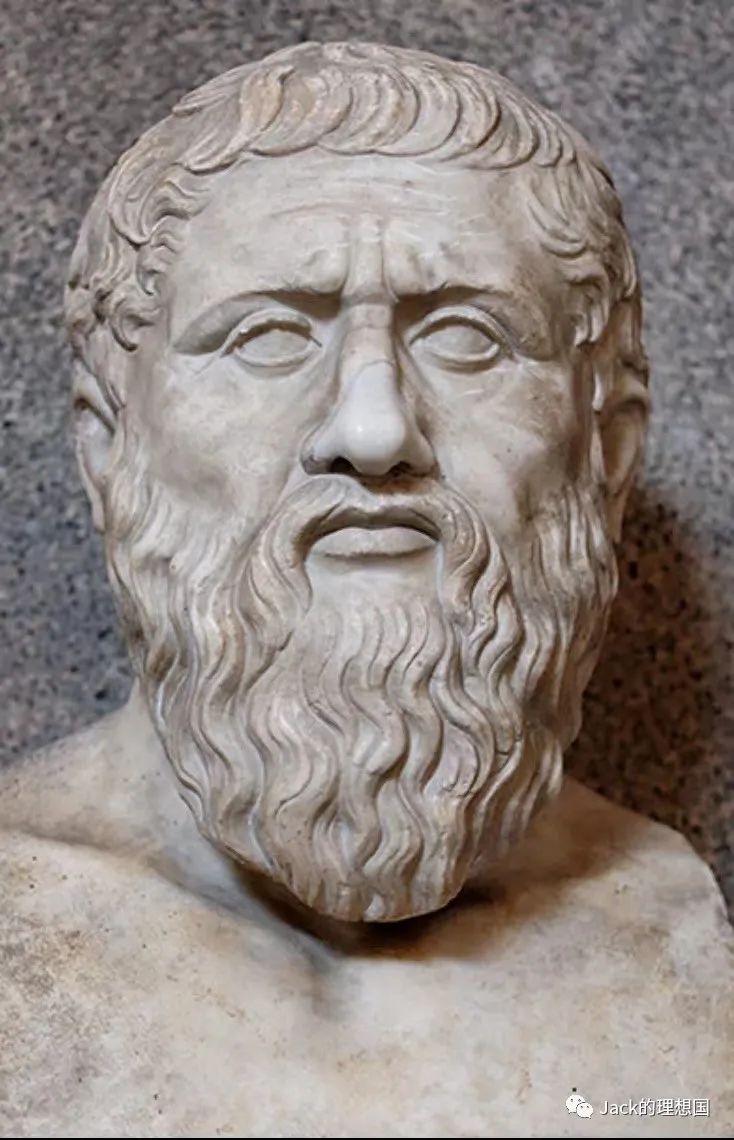
Unlike his teacher Socrates, Plato offered some general insights into the truth. During Plato’s time, many sophists claimed that truth is a relative concept, meaning that different people have different interpretations. However, Plato refuted this claim by saying that truth is objective. To quote from a research essay on Plato’s thoughts, “[truth] is that which our reason, used rightly, apprehends.” This quote implies that truth has objectivity and ties to an individual's reasoning abilities. One who reasons with more clarity is more likely to approach the truth. Plato further extended his thinking by arguing that most knowledge would be possible to grasp once an individual understands its truth.
Aristotle, being the student of Plato, brought some of his teacher’s thoughts to the ground. He defined the truth with more brevity and specificity. One of his most famous definitions is, “To say what is that it is not, or what is not that it is, is false, while to say of what is that it is, and of what is not that it is not, is true.” This definition essentially sets the tone for modern explanations of the truth to emerge and develop. To simplify this definition, it translates into “a claim of an object or event that provides an inaccurate description is untrue,” and vice versa. On another note, Aristotle pointed out that truth is a matter of striking harmony with the external world and finding the natural patterns and reasons behind them. This point is similar, to an extent, to the arguments put out by Zhuang Zi and Taoism, in China, roughly during the same period of history.
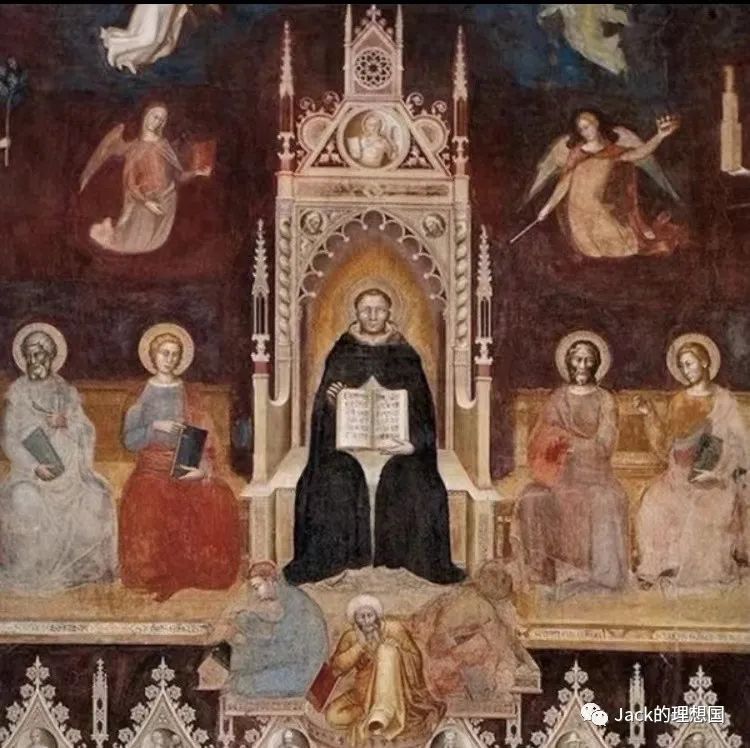
(St. Aquinas (man in black robes) in church)
As previous articles illustrated, although the Middle Ages witnessed a dim in the light of civilization, the fields of religious study and theology still advanced significantly. St. Thomas Aquinas is one of this era's most respected scholars and theologians. In his work, Aquinas defined the truth as “Veritas est adaequatio rei et intellectus”, or “Truth is the equation of thing and intellect.” He later attempted to clarify this definition by writing along the lines of Aristotle, “A judgment is said to be true when it conforms to the external reality,” also called the “correspondence theory of truth.” External reality places a subject's body and other characteristics into broader society. Therefore, Aquinas argued that truth, in the end, has a lot to do with the development of human society and the relationship between the individual and the surrounding environment.
Another notable theologian during the Middle Ages that wrote about the truth is Christian philosopher John Philoponus (470-500s CE). His explanation of the truth is quite different from the previous works of his predecessors. Philoponus highlighted, “Truth is neither in the things or states of affairs (pragmata) themselves, nor in the statement itself, but lies in the agreement between the two.” In this quote, “state of affairs” is a way the real world must be to make some given judgment of the real world true. This term could be linked to the idea of the truth because the latter idea is sometimes hidden in the state of affairs. But Philoponus suggested otherwise. In his work, he created an analogy to the fitting shoe, the fit consisting in a relation between shoe and foot, not to be found in either one by itself. Similarly, the truth sometimes cannot be found by explaining why the world works in such a way. It can be found when one combines various elements of society, the individual, and the concerned subject itself.
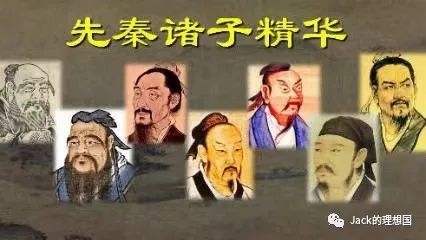
In ancient China, philosophers who represented schools of philosophy during the Warring States Period of history came up with divergent definitions of the truth and paths to seek it based on social realities. Arguably the most accomplished school of thought on this matter during that time was the Mohists. The Mohists devised “The Three Standards” to evaluate statements. They are “the affairs of the ancient sage kings . . . what the people have heard and seen . . . the benefit of the people”. Some scholars have pointed out that these three standards could be the criteria for determining the truth in arguments or opinions. They could also be pragmatic criteria for an individual to choose which practices to follow and which to not, leading them closer to the truth.
Along with the Mohists, the school led by Han Fei Zi was prominent during the Warring States Period too. One of Han Fei Zi’s most provocative ideas is, “Sayings/words are things that are believed because many endorse them. Concerning something that is not “ran” (true), if ten people say it there is still doubt, if a hundred people say it is considered ran, if a thousand people say it, it cannot be rejected.” This view holds that what is the truth is more related to society's collective decisions. If the majority believes in an explanation of a phenomenon, an event, or any other subject matter, then that explanation can be considered the truth. Han Fei Zi’s proposal is more popular in modern-day societies. Especially on public topics, people agree that the consensus of the majority is more likely to yield the most accurate results.
A fitting place to end this journey of investigation is Africa, where conventional wisdom and modern philosophy provide intriguing perspectives on the issue of the truth. V. Y. Mudimbe is a renowned African philosopher. He argues for “an emerging truth” rather than one that directly presents itself for exploration and examination. To elaborate, one of his central thoughts is that “the African identity is still not apparent, but in the process of swimming the waves into other cultural contexts,” as one researcher puts it. Mudimbe emphasizes that the process of searching for the truth is ultimately more important than the truth itself.
Overall, this essay demonstrates the diversity of thought from the past to the present on two essential questions: What is “the truth”? How does one or a group procure it? A brief look at the ancient Greeks, medieval Europe, ancient Chinese, and African thinkers throughout the ages explains the importance of this concept to the development of cultural value and identity. Without these explorations, it is difficult for humankind even to make sense of knowledge and culture, which were closely linked in the past.
什么是 "真理"?一个人或一个集体如何获取真理?这一直是哲学的核心讨论主题之一。自七万年前的认知革命以来,人类一直在寻求生命的意义,试图解释自然现象或社会行为模式。其中一个手段便是引入 "真理 "的概念,在某种意义上,它展示了个人与社会在最基本状态下的运作与其中蕴含的理性。通过研究古典希腊人、中世纪神学家、中国和非洲哲学家的案例,这篇文章将表明,全球几乎每一种文化都对真理有独特的解答。这些解答创造了文化价值,并因此推动文化发展。

(如今希腊雅典科学院门口的苏格拉底(右)和柏拉图(左)雕像)
最适合调查 "真理 "哲学的时期之一是古希腊的古典时期,从公元前510年左右开始。以苏格拉底、柏拉图和亚里士多德为轴,著名的哲学家们在彼此的思想基础上,进行自己的创新。苏格拉底并没有提供任何关于真理的个人定义,相反,他的一生向来都在质疑别人的定义。苏格拉底还说,一般的知识,包括关于真理的知识,来自于对德行、虔诚、善、恶等重要概念普遍定义的挖掘。
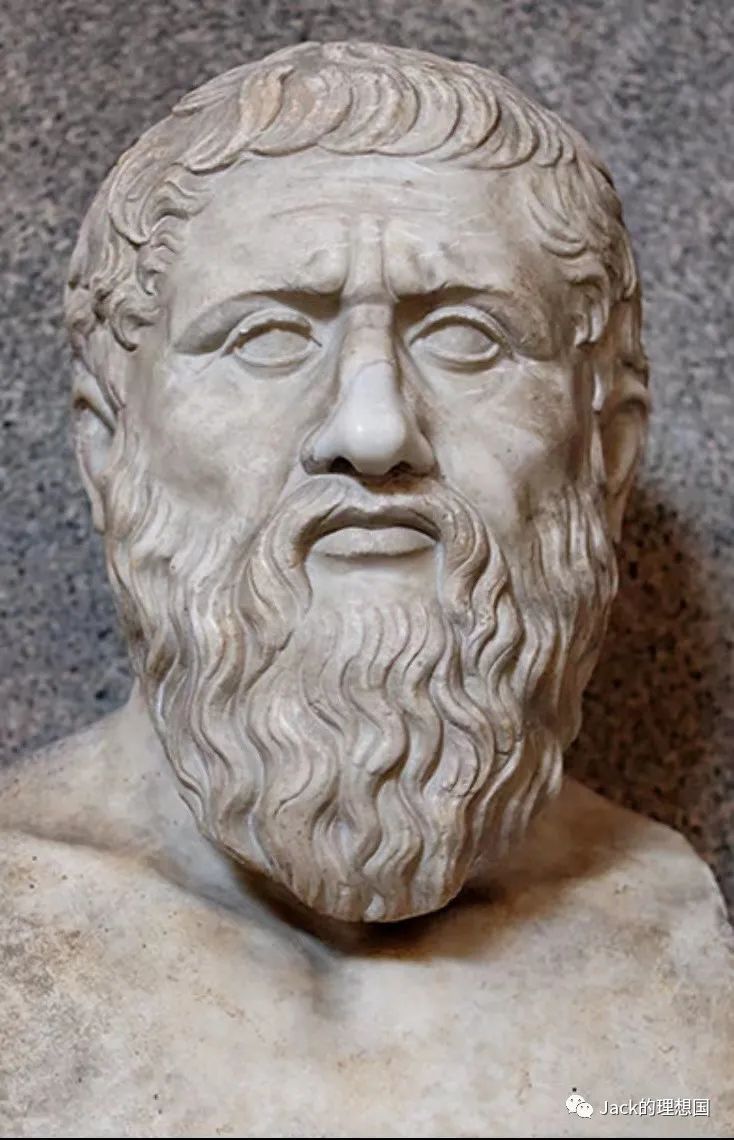
(柏拉图,前427-前347)
柏拉图与他的老师苏格拉底不同,他提供了一些关于真理的一般见解。在柏拉图时代,许多诡辩家、智术师声称,真理是一个相对的概念,这意味着不同的人对它拥有不同的解释。然而,柏拉图反驳了这种说法,认为真理是客观的。这里引用一篇关于柏拉图思想的研究论文,"[真理]是我们正确使用的理性所能领会的。" 这句话意味着真理具有客观性,它与一个人的推理能力有显著的联系。一个人如果逻辑更清楚,就更有可能接近真理。柏拉图还进一步扩展了他的思想,认为一旦一个人理解了背后的真理,大多数知识就可以被掌握。
亚里士多德作为柏拉图的学生,把他老师的思想进一步发挥与实际化。他对真理的定义更加简洁和具体。他最著名的定义之一是:"非而是,是而非,为非;是而是,非而非,为是。" 这个定义基本上为现代真理的解释的出现和发展定下了基调。为了简化这个定义,它可以被理解成 "对一个物体或事件提供不准确的描述的说法是不真实的",反之亦然。从另一个角度看,亚里士多德指出,真理是一个与外部世界达成和谐的概念,是一个找到自然模式和背后原因的概念。这一点在某种程度上类似于大致在同一历史时期中国的庄子与道家所提出的论点。

(教堂内的托马斯·阿奎那(黑袍)
正如之前的文章所述,虽然中世纪见证了文明的暗淡,但宗教研究和神学领域仍有很大的进步。圣托马斯-阿奎那是这个时代最受尊敬的学者和神学家之一。在他的作品中,阿奎那将真理定义为 "Veritas est adaequatio rei et intellectus",或 "真理是物(事情)对知的适合"。后来他试图解释这一定义,随亚里士多德的思路写道:"当一个判断符合外部现实时,就说它是真的",这也被称为 "真理的对应理论"。外部现实将一个主体的肉体和其他特征置于一个更广泛的社会中。因此,阿奎那认为,真理最终与人类社会的发展以及个人与周围环境的关系有很大关系。
中世纪另一位写过真理的著名神学家是基督教哲学家约翰-菲洛波努斯(公元470-500年代)。他对真理的解释与他的前辈们的作品大不相同。菲洛波努斯强调说:"真理既不在事物或事态(pragmata)本身,也不在陈述本身,而是在于两者之间的一致。" 在这句话中,只有现实世界具备某种“事态”,才能使对现实世界的某些特定判断成为事实。这个词可以与真理的思想联系起来,因为真理有时隐藏在事态中。但菲洛波努斯提出了不同的提议。在他的作品中,他创造了一个与合脚的鞋子的类比 - 合脚包含在鞋子和脚之间的关系中,而不是在任何一个本身中找到。同样,真理有时不能通过试图解释世界为什么以这样的方式运作来找到。当我们把社会、个人和相关主体本身的各种因素结合起来时,才可能找到真理。
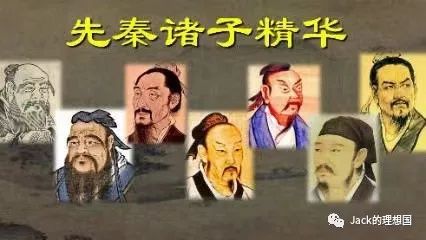
在古代中国,历史上的春秋战国时期,代表各个流派的哲学家们“百家争鸣”,他们更关注现世民生中的“真理”,提出了不同的真理定义和寻求真理的途径。可以说,当时在这个问题上最有成就的学派之一是墨家。墨家设计了“三条标准”来寻求社会普遍意义上的真理。它们是:古之圣君,民之所闻所见,民之所利。一些学者指出,民之“所闻”、“所见”、“所利”这三个标准可以是寻求社会意义上真理的普遍标准。它们也可以是一个人选择哪些做法应该遵循,哪些不应该遵循的实用标准,这些标准使其行为和追求更接近于真理。
与墨家一起,韩非子领导的学派在战国时期也很突出。韩非子最富洞见性的观点之一是:“言之为物也以多信,不然之物,十人云疑,百人然乎,千人不可解也。” 这种观点认为,真理与社会的集体决定更有关系。如果大多数人相信对某种现象、事件或其他主题的解释,那么这种解释就可以被认为是真理。韩非子的建议在现代社会可能更受欢迎。特别是在公共话题上,人们同意大多数人的共识更有可能产生最准确的结果。
结束这次调查之旅的一个合适的地方是非洲,那里的传统智慧和现代哲学为真理问题提供了耐人寻味的视角。V. Y. Mudimbe是一位著名的非洲哲学家。他主张 "一个正在出现的真理",而不是一个直接呈现给人们探索和检查的真理。详细说来,正如一位研究者所阐述的那样:"非洲人的身份仍然不明显,他们仍是在向其他文化背景融合的过程中"。Mudimbe在强调,寻找真理的过程最终比真理本身更重要。
总的来说,这篇文章展示了从过去到现在各个文化在探讨“真理”问题上的思想多样性。什么是 "真理"?一个人或一个集体如何获取真理?对古希腊、中世纪欧洲、古代中国和历代非洲思想家的简要考察解释了这一概念对文化价值和身份发展的重要性。如果没有这些探索,人类甚至很难解释知识的认知和文化的发展对人类的意义。
- 本文标签: 原创
- 本文链接: http://www.jack-utopia.cn//article/390
- 版权声明: 本文由Jack原创发布,转载请遵循《署名-非商业性使用-相同方式共享 4.0 国际 (CC BY-NC-SA 4.0)》许可协议授权










